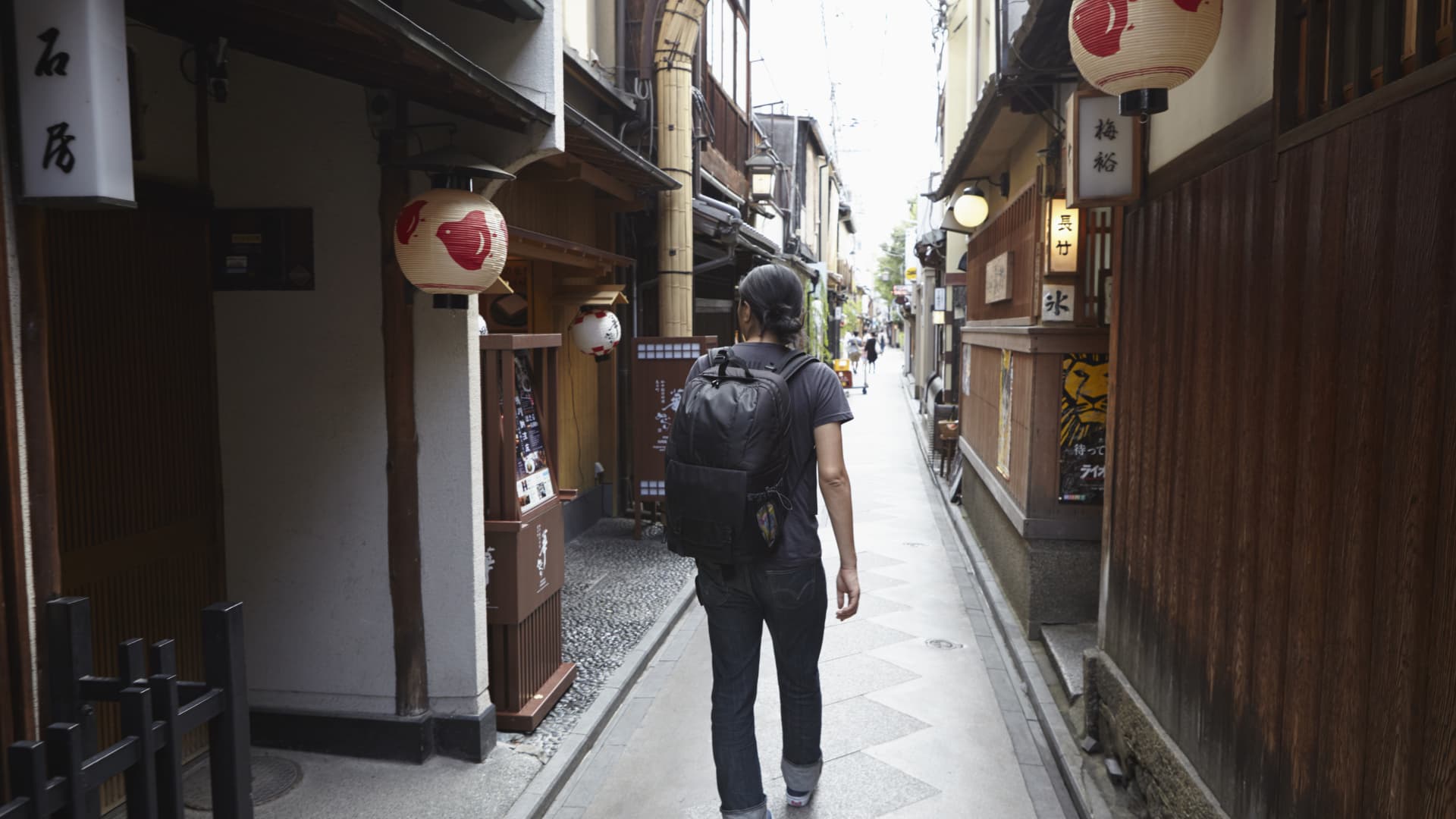Products You May Like
Kyoto’s flat geography makes long strolls easy.
And by using bustling Shijo Street — also known as Shijo-dori — as a main street for navigation, it was a breeze to weave through the city during my three-month trip in May.
Between meal runs and plotting routes to popular attractions such as Nijo Castle and Kiyomizudera, I clocked close to 130 miles on foot.
Kyoto’s traditional businesses and ancient temples didn’t disappoint, but a new trend caught my attention. More artisanal shops are popping up — many not far from the city’s most famous sights.
Here are five of my favorites.
O’Chill — for meditation and tea
Opened in June 2023
Closest to: Kyoto Imperial Palace (12 minutes)
Curiosity was my main motivation to visit O’Chill, which allows visitors the chance to drink — and smoke — tea.
Phones are strictly forbidden in the zen-like ceremony room, where matcha is served in a traditional tea ceremony. Guests are then given hookahs, with tobacco replaced by tea leaves.
Co-founder Kiruta Wataru explains that tea leaves remove the prejudice often associated with smoking, while the fired leaves act like incense. The experience is a form of “shiko-hin,” or self-nurturing ritual, he said.
“We believe that any lifestyle is good if the person is happy,” Wataru said.
My eyes widened with the first puff. The perfume of the tea leaves produced a sweet, woody flavor, as I passed the pipe between the company’s other co-founder Daichi Isokawa and two guests.
The 90-minute experience includes a guided meditation and refreshments.
Rokuhichido — for paper objects
Opened in April 2023
Close to: Hokan-ji Temple (1 minute)
With all eyes on the famous five-story pagoda nearby, it is easy to miss Rokuhichido, a shop that makes Japanese paper products using methods like silk screen printing and paper cutting.
The brand first gained popularity with postcards, then expanded to produce playful paper balloons and miniature figurines, shaped like marine animals or places like Mount Fuji.
Designs are based on Japanese traditions and culture, the four seasons and landscapes, manager Shota Yamada said. Its ukiyo-e postcards, featuring classic motifs like geisha and shogun, are the most popular, he added.
“Depending on the product, a single craftsman can produce only a few dozen of our products per day,” said Yamada.
Gokago — for matcha drinks and food
Opened in June 2023
Close to: Kiyomizudera Temple (2 minutes)
There’s no shortage of matcha cafes in Kyoto, but no one does it quite like Gokago. The finely ground green tea — in everything from drinks and donuts to ice cream — is whisked right in front of guests.
Tea ceremonies are a wonderful Japanese tradition, said the company’s director Kazuaki Nakanishi. “Since experiencing the traditional tea ceremony can be a hurdle, we thought it was important to offer it in a casual style to make it accessible to as many people as possible,” he said.
Admittedly, the experience here doesn’t replace the real thing, but it’s still a great stop for an authentic matcha brew en route to Kiyomizudera, one of Kyoto’s most famous temples. And visitors get to see the precise movements and formal presentation of the ingredients, which is part of the ritualistic grace of a formal ceremony.
Kaji Kyoto — for Peruvian and Japanese fine dining
Opened in May 2023
Closest to: Nishiki Market (11 minutes)
Traditional restaurants are everywhere in Kyoto, but Kaji Kyoto isn’t one of them.
“I want guests to leave Kaji and see how Japanese people that left Japan had to adapt because the ingredients they had were different — and were just as delicious,” said head chef Keone Koki.
Koki brings his Peruvian heritage to Japanese cooking, in one example using passion fruit from Okinawa as a marinade for a tiradito, an onion-free ceviche. “It’s also a bit different since most sashimis are only eaten with shoyu,” he said.
With only eight seats, the restaurant is housed in a traditional merchant house, with seating split by a small kitchen in between. The effect is much like a performance, with Koki and his crew of five endearing themselves to guests with light banter.
Fuku Coffee Roastery — for specialty coffee
Opened in March 2023
Close to: Kennin-ji Temple (4 minutes)
I initially thought this was a coffeehouse, but I found out from Morio Ajiki that his company provides high quality coffee beans to businesses.
Luckily, visitors can still drop by for a cup.
“There were customers stopping by my shop who wanted to try my coffee,” Ajiki said. “So I decided to serve them.”
It’s easy to strike up a conversation with the shy but affable Ajiki, who will likely pop through a set of sliding doors that lead to his home. You might even catch a glimpse of his cat, which the store is named after.
Cups of coffee are meant to be had on the go, but there are two benches — one inside and the other out front — for those who wish to stay.
The roastery displays products made by artists in the neighboring alley. This level of mutual respect between artisans in Kyoto makes discoveries like this well worth the walks.
